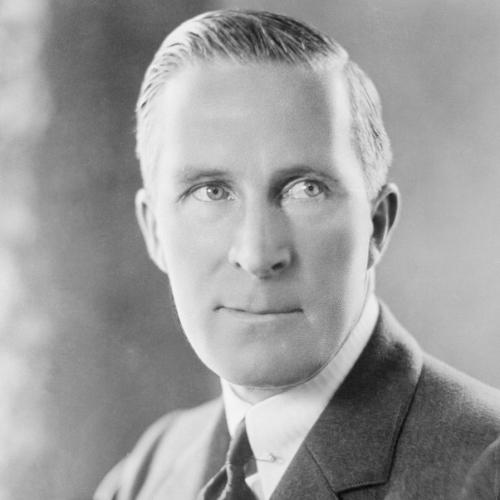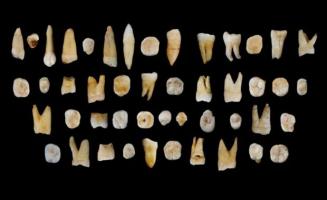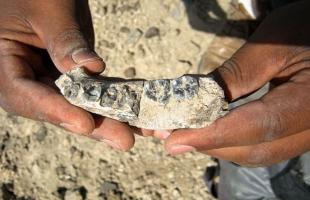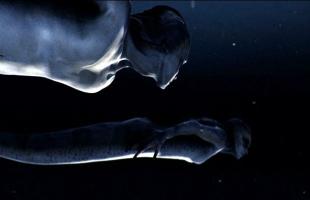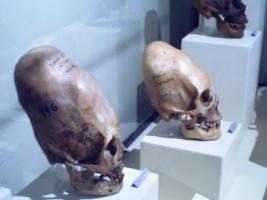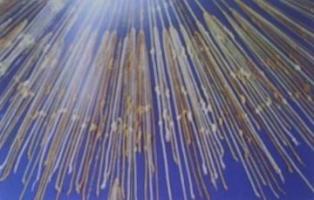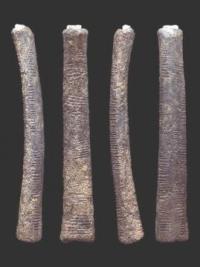Copy Link
Add to Bookmark
Report
Taylorology Issue 100

*****************************************************************************
* T A Y L O R O L O G Y *
* A Continuing Exploration of the Life and Death of William Desmond Taylor *
* *
* Issue 100 -- 2013 Editor: Bruce Long *
* TAYLOROLOGY may be freely distributed *
*****************************************************************************
CONTENTS OF THIS ISSUE:
Twisted by Knaves
"What I Think of Mary Miles Minter" by Jeanie Macpherson
The 1929/30 Flare-Up of the Taylor Case
Mary Miles Minter vs. CBS
*****************************************************************************
What is TAYLOROLOGY?
TAYLOROLOGY is a newsletter focusing on the life and death of William Desmond
Taylor, a top Paramount film director in early Hollywood who was shot to
death on February 1, 1922. His unsolved murder was one of Hollywood's major
scandals. This newsletter will deal with: (a) The facts of Taylor's life;
(b) The facts and rumors of Taylor's murder; (c) The impact of the Taylor
murder on Hollywood and the nation; (d) Taylor's associates and the Hollywood
silent film industry in which Taylor worked. Primary emphasis will be given
on reprinting, referencing and analyzing source material, and sifting it
for accuracy.
*****************************************************************************
*****************************************************************************
Twisted by Knaves
According to historian Philip E. L. Smith, around the year 1942
Charlotte Shelby hired writer John Gallishaw to ghost her fictionalized
autobiography. At her lawyer's suggestion, it was written as a novel to avoid
libel suits.
The novel was titled "Twisted by Knaves".
After Shelby's death, the typed manuscript passed into the possession of
Mary Miles Minter, and was among her effects donated to the Margaret Herrick
Library of the Academy of Motion Picture Arts and Sciences. A few copies
were also obtained years ago by private individuals.
In 2013 "Twisted by Knaves" became available online by Filmbell, with
extensive commentary by Douglas Bell. Although the online version contains
some summarized and paraphrased material, the book's essence is seemingly
intact, freely available with commentary at
http://twistedbyknaves.com
or without commentary at
http://twistedbyknaves.com/2013/06/04/title-page-and-disclaimer-annotated-synopsis-of-twisted-by-knaves/
The book changes the names of historical characters, but most are easily
identifiable and our commentary below will utilize the real names.
The book covers the period of time from 1920-1940. A substantial portion
of the book deals with Charlotte Shelby's dealings with Leslie B. Henry, and
the criminal and legal cases against him and the investment firm that
employed him. Her conflicts with her daughters, Mary and Margaret, are also
a considerable portion of the book.
But our own interest in the book primarily concerns its treatment of
William Desmond Taylor, the impact of the Taylor murder on their lives, and
the film career of Mary Miles Minter.
* * * * * * * * * * * * * * * * * * * * * * * * * * * * * * * * *
The book indicates that in 1920 Charlotte arranged for Margaret to take
a screen test for a film; Margaret passed the test and would have been given
a good supporting role. But when Mary heard about it, she obstructed the plan
and stated that [henceforth] she herself would be the only family member in
movies. Mary's attitude was strongly influenced by Jeanie Macpherson, who
had had once been professionally snubbed by Charlotte and now sought
vindictive payback by sowing conflict within the Shelby family. With an
abrupt end to Margaret's potential film career, Charlotte steered Margaret
into real estate investments. In actual history, this can be dated to August
1920; Charlotte arranged for strong newspaper publicity to promote Margaret's
new business career.
See http://www.taylorology.com/press/1920/LAHerald082820.jpg
* * * * * * * * * * * * * * * * * * * * * * * * * * * * * * * * *
The venom which the book directs at Les Henry is understandable and
expected; the venom directed at Jeanie Macpherson is surprising. The
remarkable degree to which Jeanie Macpherson is portrayed as villainess in
the book makes the reader long to hear Macpherson's side of this story, but
she probably would describe her own actions as simply encouraging her young
friend to become more assertive and independent from her dominating mother.
* * * * * * * * * * * * * * * * * * * * * * * * * * * * * * * * *
William Desmond Taylor is presented in a totally positive manner; he
emerges much better than any other male character in the book. Charlotte
expresses no criticism about him, and only wishes that Mary was spending even
more time with him, because he was such a positive influence on her. It is
understandable why Charlotte would wish to advance this "history", in an
attempt to divert suspicion from herself, but Charlotte's attitude in the
book is contrary to previous statements of others, including Mary, and is not
really credible.
* * * * * * * * * * * * * * * * * * * * * * * * * * * * * * * * *
In a 1922 newspaper interview, Marjorie Berger stated that Taylor showed
her a large roll of bills during their tax conference in her office on the
day of Taylor's death, and the roll of bills was not found on his body the
following morning.
(See http://www.taylorology.com/press/0217/pLARec0217.jpg )
In the book, Berger telephones Charlotte on the evening of February 1 and
mentions Taylor's large roll of bills to Charlotte. This second-hand
repetition of Berger's tale increases the possibility that Taylor was robbed
after being shot.
* * * * * * * * * * * * * * * * * * * * * * * * * * * * * * * * *
In the book, the Shelby family learned of Taylor's death on February 2
essentially the same way as was related in previous statements by Charlotte
and Mary. But there is an interesting dramatic scene that evening when
reporters and detectives besieged the Hobart house and attempted to question
Mary, even demanding that she confess to Taylor's murder.
* * * * * * * * * * * * * * * * * * * * * * * * * * * * * * * * *
As discussed in Taylorology 98, there are several theories as to why
Mary's letters were published in newspapers soon after the Taylor murder.
But those previously-discussed theories do not include the reason stated in
Charlotte Shelby's book: Mary's letters were returned to her, but it was Mary
herself who gave them to a reporter for publication, in order to show the
world the extent of her feelings toward Taylor. Supposedly, studio officials
were not involved in the release of those letters and were upset that it had
happened.
It is very difficult to accept this amazing version of the letters'
release to the press, because it is so contrary to the official statement
made by Mary a few days later, which indicated that it was indeed the studio
which had given her letters to the Examiner. To accept the book's version
would require us to think Mary's statement regarding the letters was a
carefully planned lie (and if it was indeed false, it could have been
contradicted by Neilan).
* * * * * * * * * * * * * * * * * * * * * * * * * * * * * * * * *
It is a known fact of film history that Mary was originally cast for the
lead in The Covered Wagon, but was replaced by Lois Wilson. According to
Jesse Lasky's autobiography, it was his own idea to remove Minter from the
cast, for which Minter was grateful. According to the article written by
Dewitt Bodeen (in close collaboration with Mary Miles Minter), it was
Charlotte Shelby who went to Lasky and told him that Mary was not to appear
in a Western. But in Charlotte Shelby's book, Charlotte had approved the
role, and it was Mary herself (strongly influenced by Jeanie Macpherson) who
had rejected the role.
Since The Covered Wagon was such a successful film (far more successful
than any of Mary's own films), it is only natural that neither Mary nor
Charlotte would want to later take responsibility for the blunder of having
rejected the role. But Mary's version is the least plausible of the three.
* * * * * * * * * * * * * * * * * * * * * * * * * * * * * * * * *
During the time that The Covered Wagon was still planned as a
forthcoming Minter feature, she filmed "The Cowboy and The Lady" on location
in Wyoming. According to Charlotte's book, while working on that film there
were production delays, and Mary was aligning herself with the least
desirable members of the crew. Since Patricia Palmer (Margaret Gibson) was
also in the cast of that film, we can't help but wonder if Palmer could
possibly be included in that undesirable alignment?
* * * * * * * * * * * * * * * * * * * * * * * * * * * * * * * * *
According to the book, in 1926 while Les Henry was in the process of
pilfering the Shelby accounts, he felt it was important to keep the Shelby
family squabbling with each other so that they would be diverted from paying
attention to what he was doing. As a former newspaper reporter, Les Henry
still had friends in the newspapers and city offices. Supposedly, it was Les
Henry alone who was singlehandedly responsible for the 1926 revival of the
Taylor murder case, according to the book.
Certainly it is possible that Les Henry had something to do with the
March 1926 revival and newspaper rumors, but the investigation had previously
taken new life in November 1925, with official statements having been taken
from Charles Maigne, Charlotte Whitney, and Charles Eyton. Then in March 1926
statements were taken from J. M. Berger, Margaret Shelby Fillmore, and in
April 1926 from Charlotte Shelby.
The book says absolutely nothing about the substance of the 1926
investigation, pretending it was entirely about nothing.
* * * * * * * * * * * * * * * * * * * * * * * * * * * * * * * * *
According to the book, Margaret's statements to the investigators and
grand jury in 1937 included an allegation that Charlotte had engaged in
target practice with a pistol inside her home in preparation for the Taylor
murder, and had a life-size target of William Desmond Taylor.
* * * * * * * * * * * * * * * * * * * * * * * * * * * * * * * * *
It is disappointing that Charlotte never addresses most of the specific
rumors which circulated against her regarding the Taylor case.
But still, having previously read so many portrayals of Charlotte Shelby
as a cruel, domineering stage mother or vindictive murderess, it is a nice
change to see her portrayed in a positive light.
*****************************************************************************
*****************************************************************************
The following short article is superficial and drenched in annoying
metaphors, yet it has interest because it was written by Jeanie Macpherson
concerning her friendship with Mary Miles Minter.
* * * * * * * * * * * * * * * * * * * * * * * * * * * * * * * * *
January 1922
Jeanie Macpherson
FILMPLAY JOURNAL
What I Think of Mary Miles Minter
An Appreciation of the Popular Young Star by Her Best Friend
MARY MILES MINTER is the West Wind dressed up as a Dresden shepherdess;
she's as refreshing as ozone blowing over sun-kissed waters and as exquisite
as a miniature.
Boiled down into a few words that's my impression of a very clever
little girl who has become one of my firmest and most delightful friends.
Her enthusiasm and vitality seem inexhaustible--and impossible to resist.
On hot summer days I have been toiling in my study, up to my ears in musty
old books and continuities, when a voice at the door coming from under a mop
of yellow curls would cry, "Let's go!"--and the necessity for work would
disappear in the wake of a human breeze which would blow me up in the air in
a plane or down to the beach for a swim, whichever fancy chose.
It's this factor of the unexpected that has made the success of Mary
Miles Minter. For just as you think you have her classified--poof!--and she's
done something that's entirely apart from the usual. It's a very colorful
personality that can so flash light from a hundred different facets; a
personality that is developing as she grows out of her teens into something
that will be a true delight in its full maturity. Quicksilver Mary!
And it's a personality backed by a remarkably clever brain. Most people
get fooled by Mary's beauty. They seem to consider that it is impossible for
a girl so pretty to be intelligent. But let me tell you right now that Mary
Miles Minter is one of the best informed young women I have ever met. Her
judgment and knowledge are away beyond those of the average girl of her
years, due largely to her long years of contact with the public. What young
actress can you name who spends four nights a week in study? And nothing is
ever allowed to interfere with these engagements. I know, for I've tried!
She's a strange combination of the practical and the dreamer--this Mary Miles
Minter. Quick and concise in her judgments, boyishly frank and direct in her
opinions, she yet has a mysticism from watching the sea for ships that
believes in fairies! And there is in her eyes the look of some blue-eyed,
blonde-haired Viking who sat on top of his glacier and developed a brooding
mysticism from watching the sea for ships that never returned.
Beowulf undoubtedly had it as he gazed from the prow of his burning
ships, and I can imagine it in the glance of Peer Gynt as he talked to the
Mountain Trolls. And certainly it was part and parcel of Brunhilda, the
Unafraid. A look, in other words, that peeps just over the Borderland into
things that others do not see. That's Mary Miles Minter, the Dreamer.
Then on the other hand, there's Mary, the Efficient; Mary who remains
calm, cool and collected when horses are running away or the motor cuts out
in an airplane; Mary who, in a business conversation, can keep as straight to
the point of an argument as the most astute Captain of Industry.
It's a strange combination, the Practical Mary and the Dreamer Mary.
It has created three dominant characteristics: unswerving loyalty to friends,
charity to a fault and splendid tenderness.
If you're a friend of Mary Miles Minter you're one in the fullest sense
of the word--and no one had better say a word against you or she'll sweep the
place like the little West Wind militant she is. It's a loyalty shorn of
diplomacy, a loyalty that sometimes loses friends--but an unusual and
splendid trait in a world of people too much inclined to follow the line of
least resistance. And it's a loyalty that carries a standard for you also.
Mary is hotly, boyishly frank toward any friend who falls below the ideals
she has set--but if you were to suffer sudden trouble--you'd find brusqueness
immediately replaced by an abiding tenderness, and overwhelming desire to
"help out." I appreciate this opportunity to give my impressions of Mary
Miles Minter because I feel so few people know the real Mary. And what 1 have
said is in no sense flattery, but a heartfelt tribute to a little friend, the
most refreshing of all my acquaintances. Her superabundant vitality is
all-pervading, and she is as good for one as the breath of an electric fan
when the thermometer registers 110 degrees in the shade. This vitality of
Mary, her combination of dreaming and practicality, her careful education and
her bewildering unexpectedness provide her with a well of professional
potentialities such as can be shown by but few present-day actresses.
Glorious and splendid as is the Realart star of today, she is only beginning
to fulfill the promise of her womanhood.
*****************************************************************************
*****************************************************************************
The 1929/30 Flare-Up of the Taylor Case
* * * * * * * * * * * * * * * * * * * * * * * * * * * * * * * * *
December 21, 1929
SAN FRANCISCO CALL-BULLETIN
Ex-Governor Says He Has Proof L.A. Actress Killed Movie Director
..."I had proof that a motion picture actress murdered William Desmond
Taylor.
"Los Angeles grand jurors told me that there was no use in presenting
the facts to them because District Attorney Asa Keyes would not prosecute."
This was the sensational statement here today of Friend W. Richardson,
former governor of California.
Richardson said that while he was the governor he came upon the solution
of the mysterious murder of Taylor, one of Hollywood's most famous directors.
The Taylor murder in 1922 ranks with the murders of "Dot" King and
Arnold Rothstein as one of the fascinating unsolved mysteries of American
crime annals.
The former governor's statement was confirmed by J. J. Smith, former
Folsom prison warden, and by Thomas Gannon, former prison director.
Gannon said that a "dope" party at which the murder was planned was
describe to him and other officials by one of those who furnished the
governor with his information.
Richardson said that when he was told by Los Angeles grand jurors that
there was no use in presenting the facts to them, he ordered the release from
Folsom prison of a criminal who witnessed the murder.
"I told the prison board," said the former governor, "to release this
man because I feared that those responsible for Taylor's murder would do away
with him, too.
"The last I heard was that this witness was in Vera Cruz, Mexico, where
most of the other witnesses were spirited."
The former governor then told some of the story of his now famous
quarrel with Keyes.
"Shortly after I took office in 1923," he said, "a convict applied for
pardon. I learned that the man was innocent and that Keyes had 'framed' him.
"I granted the pardon. Soon there were other cases. After several had
been presented, I issued a statement excoriating Keyes for 'framing' innocent
men.
"Shortly thereafter there was another case, and I asked those
representing the prisoner to get a statement from the district attorney. They
came back with word that Keyes believed the man innocent but would make no
recommendation.
"I issued another statement against Keyes.
"About that time I heard that a prisoner in Folsom knew much about the
murder of the motion picture director. I looked into his facts, gathered more
facts and finally went to Los Angeles.
"I telephoned the foreman of the grand jury and the chairman of the
jury's criminal committee and asked them to see me.
"I told them that I had the solution of the William Desmond Taylor
murder mystery, that I knew the motion picture actress who murdered him.
"I asked them whether the facts should be presented to the grand jury,
and if so if there was any chance of an indictment.
"'No,' they said.
"They explained that either Keyes or one of his deputies would be in the
grand jury room and that before any person would be brought to trial for the
murder the important witness would be spirited away, bribed or murdered.
"I folded up my evidence and left Los Angeles.
"When I returned to Sacramento I called in the prison board and
explained the situation to them. I told them that already the word was around
that I had the solution of the murder and that unless we took quick action
the convict in Folsom prison would be murdered.
"They agreed with me that the convict should be given his parole and he
was.
"The last I heard of him he was in Vera Cruz, Mexico."
Asa Keyes, now in the Los Angeles county jail pending appeal of his
conviction as a bribetaker, replied heatedly to Richardson.
"He is shaking the dead bones of William Desmond Taylor for political
purposes," said Keyes.
"Murder is never outlawed. Why doesn't Richardson produce his evidence?
Why didn't he produce it when he received it?"
"Why have you not presented your facts to Buron Fitts, the present
District Attorney?" Richardson was asked.
"I left the governor's office before Fitts became district attorney," he
explained.
"Anyway, the witnesses we had then probably we could not get together
now. I don't even know where my records of the case are now."
District Attorney Fitts said in Los Angeles that while no active
investigation of the Taylor murder mystery is under way developments are
being watched.
J. J. Smith said that he remembered the convict and his amazing story,
but that he could not remember the convict's name.
One of the important witnesses to the Taylor mystery was his butler,
Edward Sands, who never has been located.
The murder occurred in January [sic], 1922, and after four years of
investigation Keyes finally announced on June 3, 1926, that the investigation
was closed.
It generally was believed that Taylor was murdered by a band of
narcotics peddlers or by one of the actresses with whom he was friendly, or
by some admirer of one of his actress-friends.
* * * * * * * * * * * * * * * * * * * * * * * * * * * * * * * * *
December 21, 1929
SAN FRANCISCO CALL-BULLETIN
Gannon Backs Richardson in Killing Expose
The story of a Hollywood "dope" party at which the murder of William
Desmond Taylor was planned was told to several state officials by a Folsom
prison convict.
This was revealed here today by Thomas Gannon, former prison director,
who confirmed the statement of Friend W. Richardson, former governor, that
state officials at one time had evidence of the murderer's guilt.
"J. J. Smith, then warden at Folsom prison, told me that a prisoner
there had told him that he knew who murdered Taylor," said Gannon.
"One rainy night I and my stenographer and Fletcher Bowron, the
governor's executive secretary, went to the prison and with Smith we
interviewed the prisoner, whose name I do not now remember.
(Bowron is now a superior judge of Los Angeles County.)
"We talked to this man just outside his cell and he wouldn't tell us the
name of the murderer, although he said he knew it.
"He said he himself was a chauffeur for a motion picture actress and he
seemed to 'know considerable' about them all.
"I rather felt that he was telling this story with the idea of getting
out of prison, but I remember that Bowron was very much impressed.
"When we returned to Sacramento we told the governor about it and I
understood he and Bowron continued the investigation. I know that the
governor went to Los Angeles and that when he returned he said that nothing
had been done down there.
"There were several reasons for paroling the prisoner. Other prisoners
had overhead his story apparently. There was danger that he might be
murdered. Also we thought that if he were paroled he could furnish more
evidence.
"I do not remember any of the details, but I do remember that this man
told us in detail about the party at which the murder was committed.
"All those present were under the influence of dope and someone
commented that Taylor knew too much, and it was agreed that he should be
murdered."
Gannon is now an examiner for the California State Railroad Commission.
* * * * * * * * * * * * * * * * * * * * * * * * * * * * * * * * *
December 22, 1929
LOS ANGELES EXAMINER
...When informed of the charges made by Richardson, [District Attorney
Buron] Fitts issued the following statement:
"I am just informed of Governor Richardson's statement. Personally, I
have never discussed the matter with him.
"Since last February this office has been working on the Taylor case.
"We have reconstructed the scene of that killing and have built a
perfect case, with only one possible connecting link to be filled.
"Detectives in this office have scoured the United States to supply that
missing point. We would welcome any help or information that could be
supplied. The story behind that murder is rather interesting, and I sincerely
trust that it ultimately will be brought to light.
"(Signed) BURON FITTS."
...District Attorney Fitts said yesterday that his office has been
working on the Taylor case for months and that he was prepared to ask the
grand jury for an indictment against "a certain person," but that this person
fled from the country.
He declined to name the "certain woman."
...Captain Ray Cato, chief of the police homicide squad, said yesterday
that he still believed Sands was the murderer of Taylor. Cato and Judge
Fletcher Bowron, who was secretary to Richardson during his term, told
yesterday of the appearance of a convict before the grand jury to testify
concerning the Taylor case. This man, they said, told such conflicting
stories that this testimony was discarded as worthless...
* * * * * * * * * * * * * * * * * * * * * * * * * * * * * * * * *
December 23, 1929
LOS ANGELES EXAMINER
Asa Keyes, convicted district attorney, yesterday struck back vigorously
at former Governor Friend Richardson's charges that he had positive proof of
the solution of the murder of William Desmond Taylor.
Keyes, from his cot in the county jail hospital, where he is recovering
from an operation on his jawbone, answered the former Governor's
charge--"that Asa Keyes had blocked the prosecution of Taylor's slayer"--in a
written statement, in which he directed several pointed questions at his old
political enemy.
Keyes declared that he is "just a political prisoner, being used by
politicians and their supporters as a pawn on the chessboard of politics."
"The Taylor murder happened in 1922 while Thomas Lee Woolwine was
district attorney of Los Angeles County and while Buron Fitts and I were both
deputies in the district attorney's office," said Keyes. "The case was
thoroughly investigated by Mr. Woolwine, by the detective staff which he had,
by the police department, the sheriff's office, and by every newspaper in Los
Angeles and some newspapers in San Francisco, Chicago and New York.
"No stone was left unturned either then or since then to uncover the
murderer of Taylor. When I became district attorney, and Mr. Fitts was chief
deputy under me, we continued to do everything possible along this line.
Mr. Fitts assisted in every way at that time in the investigation. Everyone
who could shed new light on the case, everyone we thought had been
overlooked, was requestioned and the statements of everyone of these people
has been left for Mr. Fitts, my successor, in the event any new turns are
taken in the investigation.
"The statements taken during my regime in an effort to clear up this
case cover numerous pages, the requestioning of all persons who were
mentioned as principals in the case, the determined search for Edward
F. Sands, the valet, the questioning of every person who wrote that they
might know something about the case, and everyone else who thought they knew
anything of any value.
"The purported statement, therefore, of ex-Governor Richardson regarding
the Taylor murder case, if intelligently read, speaks for itself.
"Reply to the following questions will answer his statement:
"1. Why has he remained silent and waited more than three years to
reveal that he had 'positive proof' of the guilty party?
"2. Why didn't he, as Governor, direct the Attorney-General of this
state to investigate and prosecute the guilty party against whom he had such
'positive' proof.
"3. Why did he, as Governor, obtain the parole of this witness with such
vital information about the killing and allow him to leave the country
without putting his information on record?
"4. Why did he wait to make this sensational disclosure until the eve of
either his or Mr. Fitts' announcement of entering the race for Governor?"
Keyes declared further that numerous offers were made by convicts to
trade their freedom for "information" and also that various persons all over
the country offered to give "valuable information" in exchange for a free
trip to California. All these matters were investigated, he declared, and
found to be worthless.
The effort of some prisoner at Folsom to give information to the
district attorney also was investigated by an investigator from the district
attorney's office, Keyes declared, and found to be "wholly unreliable and
worthless of consideration."...
* * * * * * * * * * * * * * * * * * * * * * * * * * * * * * * * *
December 23, 1929
LOS ANGELES RECORD
...District Attorney Buron Fitts issued the following statement today:
"Emphatically, I have absolutely no further comment to make in any
respect whatever with reference to the William Desmond Taylor case at this
time.
"(Signed) BURON FITTS,
"District Attorney, L. A. County."
* * * * * * * * * * * * * * * * * * * * * * * * * * * * * * * * *
December 24, 1929
LOS ANGELES EXAMINER
The revivified investigation of the murder of William Desmond Taylor,
which has been one of the outstanding unsolved mysteries since 1922,
yesterday produced the following developments:
1. The probability Mrs. Charlotte Shelby, mother of Mary Miles Minter,
may be summoned to the district attorney's office within a few days to make a
statement;
2. Issuance of a demand upon District Attorney Buron Fitts by
Mrs. Shelby that she be exonerated of any complicity in the death of Taylor;
3. The statement by Superior Judge Charles Fricke, formerly chief deputy
district attorney, that an investigation of the slaying caused an open break
between Mrs. Shelby and her daughter;
4. Emphatic assertions by most of the officials associated with the
investigation that the slain film director's valet, Edward F. Sands, was the
actual killer;
5. A pointed denial by Attorney General U. S. Webb that he refused to
cooperate with former Governor Friend Richardson in re-opening the murder
mystery.
District Attorney Fitts' announcement that Mrs. Shelby may be called to
his office for questioning was issued shortly after she made public her plea
for exoneration...
[For the statement by Mrs. Shelby, see Taylorology 81.]
...While Judge Fricke was chief deputy district attorney in the Asa
Keyes regime he was one of those who had previously attempted to re-open the
murder case. From him it was learned that Mrs. Shelby and Mary Miles Minter
reached an open break as a result of the investigation.
"I took various statements and directed many persons in a thorough
search for evidence that might clear up the murder," said Judge Fricke. "At
one point in the investigation an open break occurred between Mary Miles
Minter and her mother. We took advantage of this situation to do all the
checking possible.
"Several other persons were directed to make investigations along
certain lines. Although every effort was made, nothing was learned that could
solve the case."
Asa Keyes, convicted district attorney, stated from his cell yesterday
that he questioned and re-questioned numerous people--including Mrs. Shelby--
in his attempts to solve the mystery.
"I exonerated no one in the case," he said, "and refused to do so until
the guilty person was arrested and prosecuted.
"I questioned Mrs. Shelby about several points in the mystery, but her
statements threw no new light upon it. She told me in detail where she was
the night before the body was found."
While former Governor Richardson continued to "stand pat" on his
assertions that he had information from a convict that Taylor's slayer was a
woman, many police officials re-insisted that all the available evidence
points the finger of suspicion at Taylor's missing valet, Edward F. Sands.
Herman F. Cline, now retired, was chief of detectives at the time. He
said:
"Richardson's statement that Asa Keyes blocked the apprehension and
prosecution of Taylor's murderer is ridiculous. The convict who told him this
story was a dope fiend. Everything possible was done to get at the bottom of
the murder and it is my belief to this day that Sands was the murderer."
Capt. E. Ray Cato, who was one of the investigators, likewise stated
that all the police records point more strongly to Sands as the killer than
to any other person.
A similar expression was uttered by Captain Dave Adams, formerly in the
detective bureau at the time of the Taylor murder and who is now a municipal
court bailiff.
"I always believed Sands was the murderer," he said.
Lucien Wheeler, former chief of detectives for District Attorney Fitts,
revealed that he had spent many months in an attempt to re-open the
investigation...
"We reconstructed the entire mystery," said he. "Everything led back to
the same man as the suspected slayer, Edward F. Sands."
...
[A lengthy interview with Charlotte Shelby is in Taylorology 6.]
* * * * * * * * * * * * * * * * * * * * * * * * * * * * * * * * *
January 4, 1930
ARIZONA REPUBLICAN
Taylor Case Slayer Named by Servant
San Francisco, Jan. 3--A prominent San Franciscan and official of a
reform organization announced that Henry Peavy had named him the murderer of
William Desmond Taylor.
Peavy, negro body servant to the slain motion picture director, was the
last person except the murderer to see Taylor alive.
The young negro's statement to his San Francisco friend and benefactor,
according to the latter, was that the testimony he gave at the coroner's
inquest in Los Angeles was deleted and incomplete because of implied threats
of certain officials engaged in conducting the investigation.
Peavy's story as related by the reform official was in substance as
follows:
"As was my custom, I went to Mr. Taylor to check out at 7 o'clock on the
evening of the murder.
"Hearing loud voices which I recognized as those of Taylor and another
person I knew by sight very well, I remained outside the door.
"I stood there for about 10 minutes and then, having an engagement,
I knocked on the door and opened it. In the room I saw Taylor and the other
person."
(The latter was named directly by Peavy to the reform official.)
"I told him I was leaving, closed the door and went out.
"A limousine with a chauffeur at the wheel stood at the curb outside the
house. After a few moments' conversation with the chauffeur, I proceeded
downtown to keep my appointment.
"It was a rule of the Taylor household that his chauffeur should report
in by telephone at any time that he started for home, in order that he might
do any errands necessary before retiring for the day.
"Taylor's chauffeur told me later that he had telephoned from downtown
as usual at 7:20 p.m. He received no response to the call. Arriving at the
Taylor house he found it dark, and got no response to repeated rings at the
doorbell.
"The chauffeur then went to his own home, he told me later.
"In the morning the body was discovered in the same room in which I had
seen Taylor and the other person arguing the night before."
The negro, gaily dressed and intensely nervous, broke down and wept
violently while on the witness stand at the coroner's inquest in 1922.
He subsequently explained to his San Francisco adviser and confidante
that he had deliberately refrained from telling the whole story because of
direct and implied threats by the district attorney's office, according to
the local reform official.
Peavey could not be reached directly here tonight.
* * * * * * * * * * * * * * * * * * * * * * * * * * * * * * * * *
January 6, 1930
LOS ANGELES RECORD
San Francisco, Jan. 6.--Otis Hefner, missing key witness in the William
Desmond Taylor murder mystery, was found today by the United Press.
Hefner is the man who former Governor Friend William Richardson said had
revealed to him the name of the person who murdered the famous motion picture
director in February, 1922.
He is believed to be the man to whom Buron Fitts, Los Angeles district
attorney, referred two weeks ago when he said:
"We have reconstructed the scene of the killing and we have built an
almost perfect case. Only one link remains to be filled."
Found by George E. Powers, a reporter for the United Press, Hefner
repeated and amplified the disclosures made to the governor and the state
prison board secretly in 1926, which resulted in his release from Folsom
penitentiary to save his life.
These disclosures intended by the governor for presentation to the Los
Angeles grand jury, leaked out prematurely and, in the opinion of the state
parole board, placed Hefner in danger of assassination at the hands of
members of the dope ring in the prison.
Found in civil life under another name, supporting his invalid wife and
baby, Hefner answered these direct questions put to him by United Press:
Q. Do you know anything of the murder of William Desmond Taylor?
A. Yes.
Q. Do you know who committed the murder?
A. Yes.
Q. Who was it?
A. ----- -----. (He named a motion picture celebrity.)
Q. How do you know this?
A. I was mixed up along with Edward Sands, formerly employed by Taylor,
in a narcotic ring in Southern California. Sands was delivering dope to
Taylor. The night Taylor was murdered I went with Sands to Taylor's house.
We saw ----- ----- leaving the premises, and a few minutes later Sands
discovered Taylor's body.
Q. When was this?
A. About 2 a.m. on February 2, 1922.
Q. Do you know of any motive for the murder?
A. Yes, I heard direct threats against Taylor's life because he had
turned "rat" and was informing on the dope ring. Also Sands told me that
Taylor was in trouble because of his love affairs.
Q. Have you ever told this to the officials?
A. Yes, in 1926 I made a full statement for Governor Richardson to
Thomas M. Gannon and other officials of the state prison board and offered to
appear before the Los Angeles grand jury.
Hefner, tall, lean and bronzed, asserted that since his release from
Folsom penitentiary he had been attempting to re-establish himself as a good
citizen.
"I'm still willing to go before the Los Angeles grand jury and tell what
I know, to clear up this eight-year-old mystery," he said.
"I hope it can be done--if it is absolutely necessary--without
subjecting my wife to humiliation, and sacrificing the place I've won back by
three years of hard work and no play. I don't want to be known as an
ex-convict. My new identity is clean. I've worked hard to make it so."
His complete statement, made to the United Press and signed by him, is
as follows:
"I came out of Texas, a green and uneducated young fellow in my
twenties, and got in with a bad bunch in Southern California. They were
smarter than I was, and altogether too fast company for me, but I was useful
to them in doing odd jobs, and I can see now they carried me along to make me
the goat.
"This clique was primarily engaged in the dope racket. There was a lot
of money in it.
"They got the stuff off the boats at San Pedro and cleared it through a
pharmacy in Los Angeles.
"One of these crooks was Edward Sands, who had ostensibly worked as
chauffeur and valet for William Desmond Taylor. Actually, Taylor was
distributing a lot of 'hype' to people in the movie business, including -----
----- (again, naming the person he asserted had committed the murder).
"Taylor and Sands had a falling out. Taylor left on a trip, and when he
returned he publicly accused Sands of robbing his home of clothing and
jewelry. Sands didn't make any pretense of working for Taylor after that, but
I think the robbery was all the bunk, for Sands continued to deliver dope to
Taylor and get his money for it.
"Sands must have been about 40 years old in 1922. He was a pretty good
sort of a guy, for a crook; he always treated me square and I always got my
money on time.
"I met him about six months previous to the murder on a movie location
in Santa Ana canyon. I was doing some electrical work for the company, and he
drove Taylor out in Taylor's car. We got talking and became friends.
"Word was passed around in this dope ring after a while that Taylor had
turned 'rat' and was tipping us off to federal officials. I heard several
conversations in which it was remarked that Taylor would be 'bumped off' if
he didn't play square. At first I paid no attention, as a lot of that sort of
talk was going around; but they kept repeating it and pretty soon I got
really interested and began to think they meant business.
"On the evening of February 1, 1922, Sands and I were out at Redondo
Beach on a job and saw Taylor and --(naming two motion picture actresses)
having dinner in a cafe.
"We went back to town and Sands went up to his apartment a few minutes,
while I waited outside. He told me when he came down that he had just talked
with Taylor on the phone--at Taylor's home--and that we were to deliver some
'hype' to the latter.
"Sands went and got a big limousine, which he said was Taylor's and had
been loaned to him. He picked up his stuff at the pharmacy, and we drove out
to Alvarado street.
"This was about 2 o'clock in the morning. We parked the car across the
street from Taylor's bungalow court. Sands and I left it and crossed Alvarado
street.
"There was another limousine at the opposite curb, with a driver at the
wheel and the motor going. A woman was coming down the short steps from the
entrance to the bungalow court. She was wrapped in a fur coat--either black
or dark brown--and I recognized her as ----------.
"She passed Sands and me and got into the limousine hurriedly, and drove
away.
"Sands told me to wait for him on the sidewalk, while he went in with
the bundle. He came back almost immediately and hurriedly crossed the street
to our car, motioning me to step lively with him. As we left the curb I
noticed a man in the bungalow court at the rear, adjoining Taylor's home, but
directly facing Alvarado street, open the shutters of a window and look out.
I read in the papers afterward that this was Douglas MacLean's home.
"When we were in the car, Sands said to me: 'It's time to be going. The
old man's got his. He stretched out deader than a mackerel.'
"We went downtown and separated. I went to Santa Ana and later to San
Pedro. I went back to Los Angeles and next Saturday evening to to find out
what was going on, ran into Sands. I saw him the next day, too. He was
leaving for San Pedro to take a boat for Mexico, and told me where to reach
him at Vera Cruz.
"I exchanged several letters with him at Vera Cruz after that. He kept
telling me to keep my mouth shut and never mention his name.
"Sands did not kill Taylor; I'm sure of that. I don't think he meant to
run away when he started for Mexico; I understand he was going down to
arrange for more narcotic shipments.
"I think Taylor was shot about 1:45 a.m. when Sands said he talked with
him on the phone from Sands' apartment, and 2:30 a.m., when we beat it from
Alvarado street.
"I did not travel with the gang after that, and, having lost the guiding
hand of Sands, I got into several jams and was sent to Folsom. At the
penitentiary I told something of this to Buck Cook, sent up for that
Providence Jewelry and Loan company job in Los Angeles, and he squealed to a
prison official.
"Thomas Gannon of the prison board then called for me, and asked me what
I knew about the Taylor murder. I made a long statement to him in the
presence of two other men. It was taken down by a stenographer. I did not
sign it.
"A week later I was paroled. I didn't know that was going to happen.
They told me that the news of my statement involving the dope ring and the
Taylor murder had leaked out, and that my life wasn't worth a nickel in
Folsom.
"I went to my father's ranch in California then, and it wasn't more than
a month before some gangster came up from Los Angeles and announced that he
was going to 'get me.' I wasn't there at the time. He came close to attacking
my father, who had to call the police for protection."
Henry Peavey, young negro, who was Taylor's valet following the
dismissal of Sands, was quoted Saturday in an exclusive United Press dispatch
as to a quarrel he said he overheard between the famous director and a person
prominent in the movies.
The quarrel, according to Peavey's story, occurred between 7 and 7:30
o'clock the night Taylor was murdered.
The person named by Hefner as seen entering a limousine in front of
Taylor's bungalow at 2 a.m. was the same one named by Peavey as having
participated in a bitter argument earlier in the evening.
[A Jan. 7, 1930 interview with Henry Peavey is in Taylorology 69.]
* * * * * * * * * * * * * * * * * * * * * * * * * * * * * * * * *
January 7, 1930
LOS ANGELES TIMES
...At the time of the [1926] investigation Capt. Bell, now inspector of
substations, was attached to the robbery investigation detail of the
Sheriff's office. Inasmuch as he had done much work on the original Taylor
murder inquiry, Bell was sent to Folsom prison to interview Hefner who had
let it be known that he knew "all about the case."
When asked about the case Hefner steadfastly declined to talk, demanding
his freedom, stating that the other convicts would kill him for "squealing,"
if he remained in prison.
Finally he agreed to talk to Sheriff Traeger, according to Bell, and a
conference was arranged.
"After talking to him I decided that the man did not even know the date
of Taylor's death," Bell declared.
Capt. People's investigation followed that of Capt. Bell's and resulted
in virtually the same findings.
"I talked with Hefner in Folsom prison at the request of Sheriff
Traeger," Capt. Peoples said. "At that time he had nothing to offer except
some information which he said that Sands had given him. There was nothing
about it that could be considered evidence."
Sheriff Traeger declined to discuss the case in detail. He merely stated
that Hefner's story was discredited at the time he first sought official
ear....
* * * * * * * * * * * * * * * * * * * * * * * * * * * * * * * * *
January 8, 1930
LOS ANGELES NEWS
...[Vincent] Clark, who is New Jersey editor of the Philadelphia
Enquirer, wired to Fitts as follows:
"Information obtained by me and given to the district attorney's office
December 19, 1922, checks in detail with recent disclosures carried in press
relating to the Taylor murder case. My statement should be on file. Have
acknowledgement receipt in my possession signed by Robert F. Herron,
Woolwine's private secretary. Can repeat statement if needed. If no more
assistance needed from me will release story to press."
Herron, who is still a member of the district attorney's staff, said he
remembered having questioned Clark but that he could find no record of the
statement in the transcript. He was making a search last night of his
shorthand notes in an effort to bring the statement to light.
After a conference with the Philadelphia district attorney, Clark
announced that he would make no further statement except to an agent of
Fitts...
The detectives were equally incredulous in regard to Peavey's story.
"Peavey had every chance to tell his story," said Capt. James Bean, one
of the men who worked on the case. "Why, he was the pride of Central avenue.
He bought himself a pair of spats and became the most important person in
town while the investigation was going on. If he had known any more, I'm sure
he'd have told it for the glory of the thing.
"There were many who didn't believe at first he was telling all he knew.
But after some newspaper boys took him out to graveyard one night and sweated
him over a grave stone and couldn't get anything more out of him, even they
were satisfied."
* * * * * * * * * * * * * * * * * * * * * * * * * * * * * * * * *
January 8, 1930
Lyle Abbott
LOS ANGELES HERALD
"The investigation of the murder of William Desmond Taylor developed no
evidence in any way implicating Mabel Normand or Mary Miles Minter."
In an exclusive interview today this declaration was made by Superior
Court Judge William C. Doran. He, as chief deputy district attorney following
the shooting to death of the motion picture director, Feb. 1, 1922 was in
direct charge of the investigation.
For eight years and in numerous past and present revivals of the Taylor
murder mystery, an unnamed "motion picture actress," has been stated in
interviews to have been the slayer of Taylor.
Judge Doran was asked specifically if he could be quoted as saying that
the investigation under his direction had exonerated the two former famous
film stars, who were close friends of the director.
"I do not feel it would be proper," Judge Doran replied, "for me to say
exactly that, for it would be a personal opinion. I will reiterate, however,
that there was no evidence to indicate either of these two young women
participated in the crime."
Miss Normand is in a sanitarium near Los Angeles in a critical condition
from pulmonary trouble and for several months her death has been momentarily
expected. Miss Minter left her palatial apartments in Los Angeles a week ago
and is now in a hospital at Santa Barbara, Cal., for what is said by her
friends to be a nervous breakdown.
Judge Doran said he had interviewed all the persons in the Taylor case
who "could have known anything of importance about it."
"Their statements," he said, "were all preserved in writing. Among those
I questioned were Miss Normand, Miss Minter and Mrs. Charlotte Shelby, Miss
Minter's mother.
"The evidence was so limited that if someone would come forward and
confess the murder, he would have to produce corroborative testimony before
his confession could be accepted. He would be compelled to substantiate his
confession by other credible testimony in order to secure his own
conviction!"
Judge Doran said emphatically: "And that, in my opinion, would include
even William [sic] F. Sands."...
"I checked all the movements of all who were in any way connected with
Taylor," Judge Doran resumed. "They included Sands, Mrs. Shelby, Miss Minter
and Miss Normand.
"I questioned Henry Peavey, Taylor's negro houseboy, very thoroughly.
He had nothing of a conclusive nature to say regarding the murder. All of his
story was collateral, after-the-fact material.
"This is not the first time that it has been reported that the murderer
of Taylor has been discovered. The report has always created the greatest
sensationalism. And each time the story has been proved to be pure fiction.
"All of these reiterated blasts of suspicion have been duds. If that
language may be permitted me to use.
"The case has been revived for discussion more times than I can
remember. Always there has been a repetition of old stories, a dressing up in
new garb of the figures in the Taylor murder mystery.
"And while known persons have been in the case, the central figure has
always been some unnamed, ghostly personage, designated in the press by
blanks or asterisks, or referred to only as 'that film celebrity' or 'this
noted actress.'
"There were three principal motives under investigation.
"It was said the crime was committed by a dope ring. But not one
particle of evidence was found to connect any of the principals--the dead man
or those we questioned--with a dope ring.
"Love and jealousy were considered. The only way these emotions entered
was through the admissions of Miss Minter. She sat in my office the day after
the murder and confessed unashamedly that she loved Taylor.
"We studied revenge, and the revenge motive was found only in connection
with Sands. Sands worked for Taylor and he ran away. Taylor had threatened
his arrest, had filed charges of theft.
"Miss Normand was questioned by me at a time when she was completely off
her guard. Under the conditions, if she had known anything about the Taylor
murder, the truth would have come out.
"I had two years service as chief deputy district attorney after the
Taylor murder. In these years I had every opportunity and used it, to follow
up every clue, sane or otherwise.
"The net result is that I believe to this day that the Taylor case
belongs among the unsolved crimes mysteries of the world and the chances are
good that it will remain there."
...Judge Doran reflectively visualized the scene of the crime in
Taylor's two-story bungalow court apartment.
"Taylor's unlocked home and his way of living without a retinue of
servants made it comparatively simple for his slayer to enter his bungalow,
shoot him and get away without leaving a single clue.
"Escape unseen from the bungalow was all that the murderer needed to
make the Taylor shooting a 'perfect crime.' And we have had evidence that
Miss Normand, Miss Minter, Peavey and the other known friends and attendants
did leave before the shot was fired."
* * * * * * * * * * * * * * * * * * * * * * * * * * * * * * * * *
January 9, 1930
LOS ANGELES EXAMINER
Birmingham, Ala., Jan. 8.--An amazing description of the murder of
William Desmond Taylor, Hollywood moving picture director, was told here
today by a man who described himself as an eye-witness to the shooting. The
man, whose identity is kept secret and who described himself as a
"racketeer," told his story to the Age-Herald and is being held by Birmingham
police awaiting word from District Attorney Buron Fitts at Los Angeles.
The man, who is identified by the newspaper as "John Doe," declared in
the statement that he was in the Taylor home, hiding behind a piano, at the
time of the shooting. He had entered the home, believing it to be another,
the statement said.
After telling how he entered the home through a butler pantry and was
surprised by a noise...the self-styled racketeer in his statement said:
"The only place of hiding I could find was behind the piano, which sat
diagonally across the corner on the opposite side of the room. I ducked in
behind it and William Desmond Taylor entered the room in which I was hiding
and (a woman's name was given here) was a few steps behind him.
"Taylor sat down at a desk of old Colonial style."
The statement said the woman sat in a chair four or five feet distant
and that the pair discussed books and things of a commonplace nature.
Then the woman took her leave, the statement went on...Taylor came back
and began working at some papers.
A negro servant came next, the statement reads, and asked if there was
anything more for him to do that night. He was dismissed by Taylor.
Next followed the details of a purported entry of the room of a person
who Taylor reprimanded for appearing in a "masquerade" and how the person, a
woman, replied defiantly.
"I got the impression," the statement continued, "that he had told her
to stay away as he seemed pretty hot."
A demand for money was issued by the woman, according to the statement,
and then followed a description of the woman lifting up the pant legs of the
trousers and revealing a mark, just above the woman's knee.
A check was given the woman, which she tore to bits, the statement said.
Later, on the point of leaving, the man said that he heard a shot and
turned to see a smoking gun in the hands of the woman.
Shifting his position, the narrative continued, he turned to see Taylor
on the point of sliding from his chair to the floor and described the
position of the body.
The statement tells of the hiding man's hurried examination of the desk
in the room and how, when leaving, he stumbled over something on the floor.
"This article," the statement said, "is still in my possession and I can and
will produce same at whatever time required."
* * * * * * * * * * * * * * * * * * * * * * * * * * * * * * * * *
January 11, 1930
LOS ANGELES RECORD
..."We have established the fact to our own satisfaction that the gun
was held not further than two inches from the body when the trigger was
pulled," Investigator King said.
"We made numerous other tests with a gun on material from the suit
Taylor was wearing, and reproduced exactly the powder marks and burns when we
held the weapon two inches away.
"It is probable that Taylor was entirely unaware of his danger. The
murder was done in cold blood.
"We know from witnesses who recently have made sworn statements that
Taylor was seriously worried over certain matters, which apparently resulted
in his death."...
* * * * * * * * * * * * * * * * * * * * * * * * * * * * * * * * *
April 4, 1930
LOS ANGELES EXAMINER
Ex-Actress Loses 30 Pounds Since Jan. 1
Within three months time Mary Miles Minter, former film star, has
practically regained her youthful figure.
The remarkable change of appearance in the blonde actress was discovered
yesterday by The Examiner when a reporter chanced to meet her in Santa
Barbara, where she is spending the winter.
Under the care of a dietician, coupled with her own determination to
reduce, Miss Minter has lost more than thirty pounds since New Year's Day.
She hopes to remove twelve pounds more.
The former star is not seeking to return to the films.
"I have so many other interests now that I have given pictures but
little thought," she said.
It took much coaxing to overcome her reluctance to pose for a newspaper
photograph. She explained that all her dresses were now much too large--"and
not only that, but you should wait until I lose another twelve pounds, and
then my figure will be just where it was before I started to take on weight.
Miss Minter lives alone in a luxurious hillside home on Mission Ridge,
Santa Barbara's multi-millionaire mountain top colony. Last Tuesday she
celebrated her Twenty-eighth birthday.
She is warm in her praise of her physician, whom she credits with
bringing the amazing change in her appearance.
"It is simply a matter of scientific understanding of body chemistry,"
she explained. "There is nothing unusual about my diet. I have plenty to eat,
play tennis and other wholesome outdoor sports, hike, dance, play chess and
above all, I stay happy."
*****************************************************************************
***************************************************************************** Mary Miles Minter vs. CBS
In 1970, CBS broadcast "Rod Serling's Wonderful World of Crime".
Contained within that show was a brief mention of the Taylor murder. Mary
Miles Minter subsequently filed a lawsuit against CBS requesting damages for
invasion of privacy. The case went to trial as the case of O'Hilderbrandt
[sic] vs. Columbia Broadcasting System, Inc.
From the TV broadcast transcript:
"We are inclined to feel nostalgic about anything old, including crime, and
especially murder. Murder is the unlawful taking of human life with malice
aforethought. It is forbidden by the sixth of the Ten Commandments, and though
some crimes are held equal to it, none is more blameworthy. Yet the act of
murder is at the core of our most enduring literature. From the story of
Genesis to the story of Hamlet, in literature as in history, we not only
tolerate murder, we relish it. The locality of a murder, as soon as the mists
of time have closed in on it, becomes a special place. The deed itself becomes
an historical event. And the murder an historical figure. There is no such
historic figure in the murder of William Desmond Taylor. No murderer was ever
caught, nor does the murder scene exist. It did exist on South Alvarado
Street, in Los Angeles, but has since been murdered by a shopping center.
The victim was a movie director of the kind likely to arouse warm feelings in
some women, and jealousy. His name was linked romantically with Mabel
Norman[d], ingenue of the Mack Sennett Comedies, but he had other strings to
his bow; it was no secret that Mary Miles Minter considered herself engaged to
William Desmond Taylor. Miss Minter was the first star ever to sign a
million-dollar contract, and since her mother, Charlotte Shelby, was still the
guardian of the girl's wealth, she did not view her daughter's impending
marriage with any great favor. Nor could Miss Norman[d], who was still in the
warmest terms with Taylor and whose picture set next to his bed inscribed
'Oh, My Dearest!' At any rate la dolce vita came to an end for Taylor one
February night in 1922. He was left on the floor of his Alvarado Street
apartment the worse for a .38 slug. A shrouded figure was observed by a
neighbor running from the scene. It could have been a man. It could have been
a woman. Today, forty-eight years after death and funeral, no one knows which
it was. Given the choice, both police and posterity like to think it was a
woman."
The program then proceeded to discuss the murders committed by Louise
Peete and Winnie Ruth Judd.
On the witness stand in the trial, Mary Miles Minter recalled watching
the program on February 15, 1970:
"... and it went on and on for a while and then ... I couldn't believe my
eyes, there was a strip of five pictures like something either cut out or
imposed upon the white TV screen and the frames oval, not quite round, five
women's pictures' heads in those frames. The first was Winnie Ruth Judd, the
second, cute little Mabel Normand, the middle one was me as I looked just
after I met Mr. Taylor, the next one was ... my mother, Charlotte Shelby,
innocent of any harm to him, and here was Louise Peete -- we used to see her
wheeling Mr. Jacob, I think, Denton, he had a house on the same corner as we
did near the Ambassador Hotel, to say hello. ... he was found in fresh cement
in his basement. There was Winnie Ruth Judd, a real murderer, Louise Peete,
a horrible murderess. ...My feelings were utterly outraged and all of the love
I felt for that man, desire to have him live, came back overwhelmingly, it
hurt me deeply. ... The suggestion and the suspicion of murder that -- with
this vicious attack upon me that I was cast in the false and unspeakably cruel
light of having been the actual perpetrator of his murderer -- I mean of his
murder, me, me of hurting him! To say it distressed me, I will say that
because it's a quiet word, it did a great deal more than that, I have never
been the same since. It gave me a terrible dread, most people I know liked me,
loved me, and I loved them, I couldn't expect total strangers to have any
confidence in me if I was an uncaught murderess who had gotten away with
something. It gave me a dread of what the public would think of me and my own
neighbors next door all around me. ..."
The judge ended the trial with a "nonsuit" judgement, dismissing the lawsuit.
Minter appealed to the California Court of Appeals, and the original nonsuit
judgement was upheld on June 28, 1974. Minter petitioned to the California
Supreme Court for a hearing, but that petition was denied on August 21, 1974.
For fuller details of the Appellate Court ruling, see
http://scholar.google.com/scholar_case?case=7870576482004228060
*****************************************************************************
*****************************************************************************
Back issues of Taylorology are available on the Web at
http://www.taylorology.com
For more information about Taylor, see
WILLIAM DESMOND TAYLOR: A DOSSIER (Scarecrow Press, 1991)
*****************************************************************************







